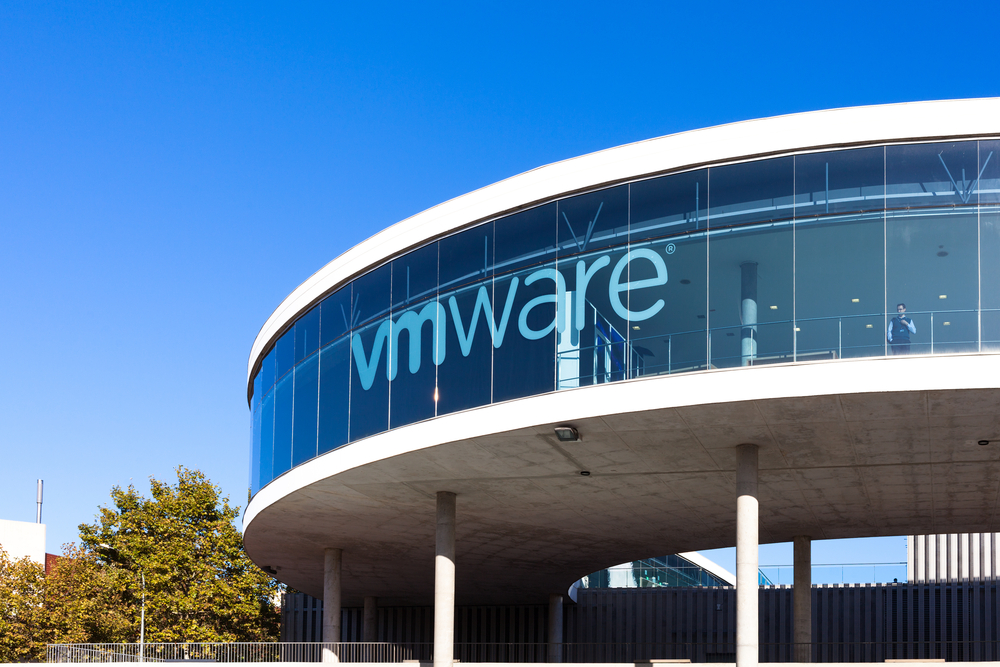

The well-worn quote from “The Godfather” plays well here at VMworld 2015: “Keep your friends close, but keep your enemies closer.”
VMware, bound and determined to nip this pesky container thing (the enemy of virtual machines) in the bud and at the same time justify its entire virtualization approach, on Aug. 31 launched the VMware Photon platform it introduced last April 20.
This is the framework VMware wants to see all its users use as a layer in the virtualized data center that welcomes containers from a slew of various makers, native cloud-based apps, data center operating systems, the usual-suspect VMs and anything else an enterprise wants to throw into a software-defined data center.
If Photon were a baseball player, it would be the catcher—trying to handle every fast ball, curve ball, slider and forkball the pitcher (the enterprise)—throws at it.
Cloud-native apps are installed in a cloud-borne virtual machine. Here’s the definition of cloud-native applications:
“Also, inside a lot of the cloud-native architectures, the application itself handles some of the redundancy that may have depended on the infrastructure to do before,” Mike Adams, a VMware product marketing exec, told eWEEK. “It can actually detect and work around failures; if it loses a particular node, no problem, it puts a bullet into that node and will spin up another one very quickly.”
Amounts to More Choices for Users
Because VMware didn’t get into the container business quickly enough a couple of years ago, the next-best thing for it to do is to make them functional inside its vSphere system. As a result, VMware claims that it can now support any application in an enterprise—especially those cloud-native applications—by extending its unified platform using Photon.
Photon features and capabilities include:
Broad container solutions support: Photon is API-centric and supports all the container makes noted above, enabling users to choose the container solution that best suits their needs.
Container security: It offers containerized applications increased security and isolation in conjunction with virtual machines as well as authentication and authorization through integration with Project Lightwave, enabling users to further secure their applications to the container layer.
Flexible versioning and extensibility: Photon provides administrators and enterprise developers with extensibility and flexibility over how to best update their container host runtime by supporting both rpm for image-based system versioning, and a yum-compatible, package-based lifecycle management system, allowing for fine-grained package management. It is designed specifically for Web-scale and high-churn workloads.
All of this will be good news to current VMware vSphere users, which number in the hundreds of thousands worldwide. Why? Because Photon offers a whole new set of functionalities that weren’t available until now. With vSphere as its foundation, Photon expands data center capabilities for IT ops teams to meet the following enterprise requirements for containers:
Security and isolation: Assuring the integrity and authenticity of containers and their underlying infrastructure, Project Bonneville, a technology preview, isolates and starts up each container in a virtual machine with minimal overhead using the Instant Clone feature of VMware vSphere 6. Instant Clone enables an admin to spin up a fully available virtual machine in less than one second.
Storage and data persistence: While many container services are stateless today, users have the desire to enable stateful services to support cloud-native databases. VMware vSphere Integrated Containers will enable provisioning of persistent data volumes for containers in VMware vSphere environments. This will enable IT operations and development teams to take advantage of the speed and portability of containerized applications in conjunction with highly resilient VMware vSphere storage, including VMware Virtual SAN and VMware vSphere Virtual Volumes-enabled external storage.
Networking: VMware NSX supports production container deployments today. With VMware NSX, IT can apply fine-grained network micro-segmentation and policy-based security to cloud-native applications. Additionally, VMware NSX provides IT with greater visibility into the behavior of containers. Finally, with VMware NSX, containers can be integrated with the rest of the data center, and can be connected to quarantine, forensics and/or monitoring networks for additional monitoring and troubleshooting.
Service-Level Agreements (SLAs): IT teams will be able to assure service-level agreements for container workloads with VMware vSphere Distributed Resource Scheduler as well as reduce planned and unplanned downtime with VMware vSphere High Availability and VMware vSphere vMotion.
Management: Administrators will be able to use VMware vCenter Server to view and manage their containers without the need for new tools or additional training through VMware’s Project Bonneville, which will enable the seamless integration of containers into VMware vSphere. Users can further achieve consistent management and configuration compliance across private and public clouds using the VMware vRealize Suite.
Originally published on eWeek.
Elon Musk sells social media platform X to his AI start-up xAI in a move…
TikTok opens e-commerce shopping in Germany, France, Italy as US future remains uncertain over divest-or-ban…
Discover expert insights on overcoming digital transformation challenges. Learn how to manage change, balance innovation,…
Microsoft drops data centre projects amounting to 2 gigawatts of power consumption as investors question…
SMIC sees revenues rise 27 percent for 2024, but profits fall nearly 50 percent amidst…
Google reassures developers Android to remain open source as it brings development entirely in-house, reduces…